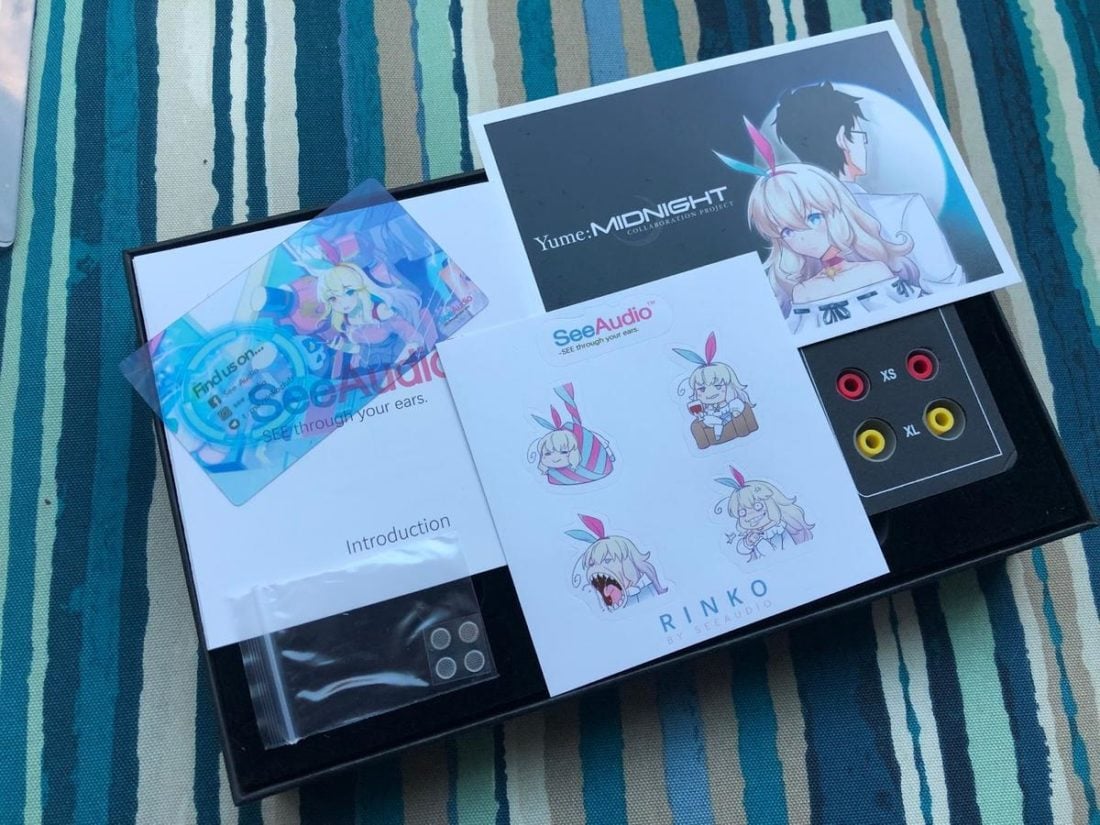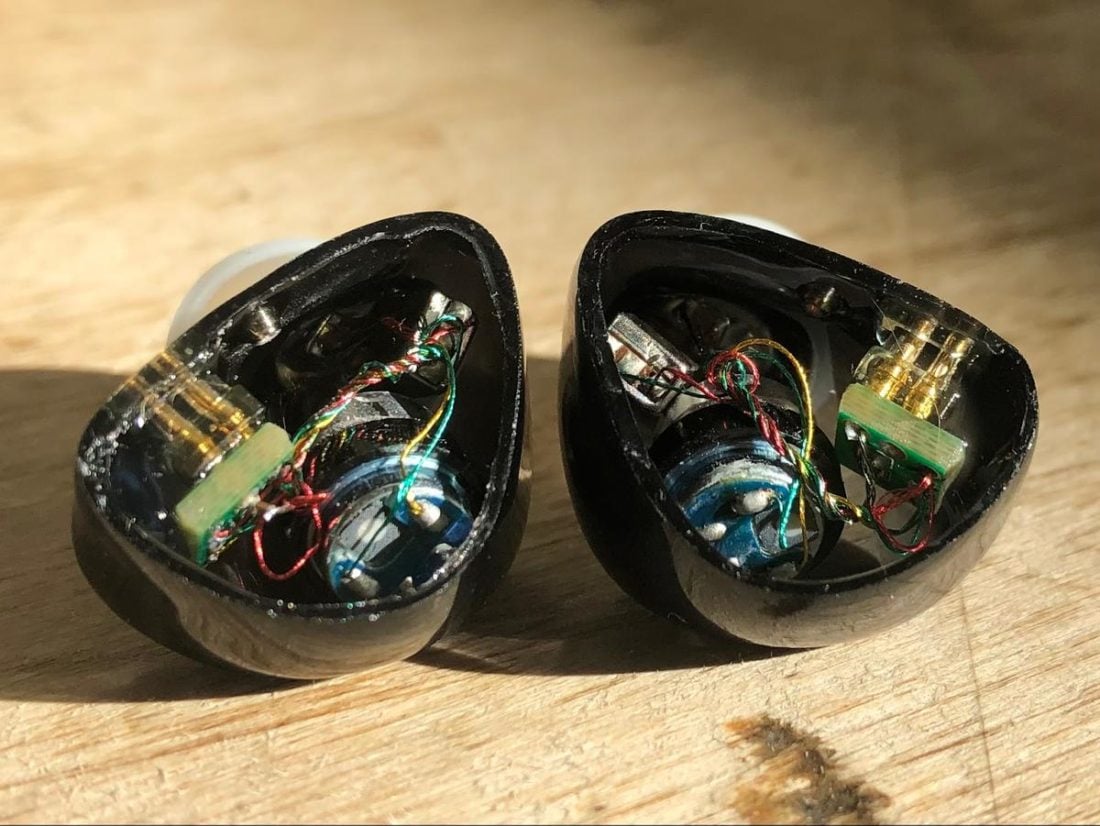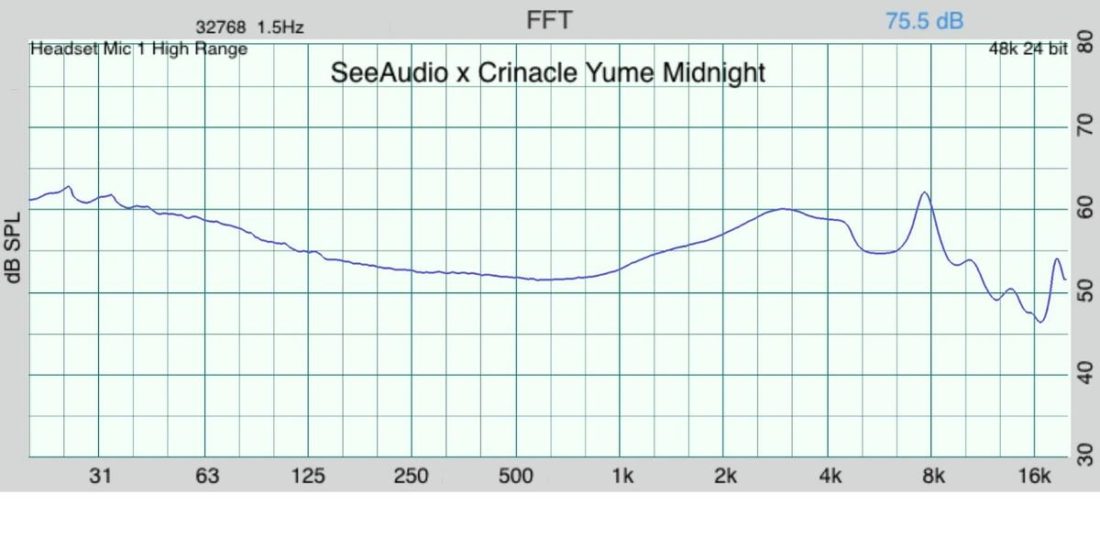Let’s face it, all the good stuff happens after midnight.
What do you do when your product receives mixed reviews? Do you scrap it and try again? Do you ignore the critics and focus only on the positives? Or do you listen carefully to the feedback and enlist one of the experts in the industry to produce a revised version intended to address the shortcomings?
SeeAudio decided on the latter.
SeeAudio released the original Yume (first called Anou) in 2021. They claim that they were “tuned by professionals following the 2020 Harman Target Curve.” Proponents of the OG Yume loved the smooth and relaxed signature, midrange performance, and comfortable shape and build. Critics pointed out a lack of low-frequency response and merely passable technical performance.
With this in mind, SeeAudio joined the queue of companies enlisting the tuning expertise of Colin Ako, aka Crinacle, known for his extraordinary IEM measurement database at In-Ear Fidelity and his recent jump to YouTube.
- Prodigious but not overwhelming sub-bass response
- Extended but non-fatiguing treble
- Smooth and enjoyable sound
- Balanced and natural midrange
- Very good presentation of vocals
- Decent included cable
- Accessories not up to the high standard set by the cheaper FHE:Eclipse collaboration
- Soft treble may not sparkle enough for treble heads
- Has some distinctive hybrid sound and timbre
- Potential build quality issues with faceplates
- Uninspired design
Crinacle has a defined tuning preference (the “Crinacle Preference Target”) for IEMs and he’s partnered with a variety of companies to produce new or revised versions to better match his tastes. These range in price from sub-USD$50 to about $1500. The newly designed SeeAudio X Crinacle Yume Midnight edition retails for around $USD200 (about $30 more than the original Yume) and is positioned about in the middle of the Crinacle tuned lineup.
The Midnight maintains the same hybrid drivers from the original, but the internal cavity structure has been modified to alter the overall sound. Keeping in mind that three different Crinacle collaboration IEMs, from three different companies, have been released in the last few months, do the Midnight have what it takes to differentiate themselves from the others or from their first incarnation?
Set your clocks to 12:00 and you/me shall see what we can see.

Company Overview
There is little information about SeeAudio. They are a relatively new Chinese IEM manufacturer known for the multi-BA flagship See Audio Neo, and the tribrid See Audio Kaguya. The Yume was their first internationally marketed product.
Technical Specifications
- Form: IEM
- Drivers: 9.2mm liquid silicone diaphragm dynamic driver, two custom-tuned Knowles BA drivers
- Impedance (Ohm): 32Ω
- Sensitivity (dB): 106dB±1dB
- Frequency Response (Hz): 20Hz-20kHz
- THD+N: ≤2%
- Isolation: 26dB
- Removable Cable: Y, Two core, silver 5N SPC cable
- Source Jack: 3.5mm TRS
- Cup/Shell Jack: 2-pin, 0.78mm
- Mic: N
- Weight (g): ~3g/IEM

Packaging
Following the current trend of female anime characters adorning IEM boxes, SeeAudio’s Rinko is prominently displayed, plaintively peering at the purchaser, and back to back with a faceless fellow wearing Crinacle-esque glasses. SeeAudio doubled down on their Rinko character, as my IEMs came with an unusual acrylic-covered postcard display, her bunny-eared headband icon adorns the hard case, and her image is on the included cutesy decals, plastic contact card, and paperwork.

Beyond all that, the IEMs, case, and five sizes of ear tips are all nestled in attractive black velvet-covered foam.

In the box
- Yume Midnight IEMs
- Two core, silver 5N SPC cable
- 5x Silicone ear tips (XS, S, M, L, XL)
- Round metal case
- 2x pairs of nozzle filters
- Postcard, instruction manual, contact card, and Rinko decals

Cable
The included dual-core wrapped cable is a decent one. Thin, soft, and malleable but still quite premium feeling. The silver-plated OCC copper is visible through the clear plastic coating and is bright and attractive. The 3.5mm TRS connector, small y-split, and 2-pin 0.78mm connectors are all constructed of silver-colored metal.

Design
I need to start this section with a disclaimer. Both of the faceplates popped off my pair of Midnight within 24 hours of their arrival at my door.
They were sitting on my ottoman when the cable slipped off the side. This pulled both IEMs down to the wood floor, whereupon impact, the carbon fiber faceplates fell off. No further damage was incurred. It genuinely surprised me because the fall was one that countless pairs of headphones and IEMs have suffered in the past with no ill effects.
When I contacted HiFiGo regarding the issue, they seemed unconcerned and suggested gluing the faceplates back on (that’s how they were originally attached). I purchased T-8000 glue for this purpose. The repair process seems to have worked perfectly and to have had no impact on the sound.

The Yume bodies are constructed of mostly opaque black resin in a softly contoured semi-custom ergonomic shape. Faceplates as noted are a black carbon fiber weave pattern. A silver SeeAudio logo adorns the left faceplate, while Midnight is written along the bottom of the right side. “SeeAudio x Crinacle” is written on the inside. The top surface contains the flush 2-pin sockets and a single vent.
The lipped metal nozzle is fairly short and holds ear tips securely. There is nothing obviously outstanding as far as the construction of the Midnight. They are fairly nondescript and average-looking in the crowded world of IEMs. The original Yume were certainly more eye-catching but sported a different shape that some users reported as less comfortable.
Comfort
The soft, flowing shape of the Midnight, coupled with their light weight, means that they should remain comfortable in the ears for most folks, although I do find them a touch bulky. As noted, the shortish and average diameter nozzle won’t bother many wearers.
Isolation and external noise reduction are quite impressive for a vented pair of IEMs.
Internals
The Midnight sport the same hybrid combo of a 9.2mm liquid silicone diaphragm dynamic driver and two custom-tuned Knowles Balanced Armature (BA) drivers as the original.

The Midnight also features an improved Low Frequency Filter Conversion (LFC) designed to remove any multi-driver crossover distortion issues. LFC is reportedly a system that precisely measures the front cavity between the dynamic driver and the tube channels to provide a better phasing response and separation of each audio frequency.
It’s these interior changes that have tuned the Midnight to Crinacle’s standards.

Yume Midnight Sound
The original Yume was lauded for their midrange and treble performance but criticized for a weak low end. Since Crinacle is known for a preference for boosted sub-bass, it should come as no surprise that the Midnight have added a whole lot more bass presence to the Yume sound. The Yume doesn’t give the same “f-you” bass boosted response of the FiiO x Crinacle FHE: Eclipse, but provides a more balanced and neutral approach.
Mid-bass frequencies are toned down in comparison to the sub-bass, but this isn’t to say they aren’t punchy when called upon. The tuning yields great vocal clarity, with a touch of warmth. The Midnight go plenty deep but are balanced by reasonably high-end extension in the treble region.
If you are sensitive to a touch of distinctive and unnatural crispness to the higher frequencies due to the hybrid driver design, you may find yourself picking up on this with the Midnight. To be honest, it doesn’t bother me, and I’ve listened to so many pairs of hybrid IEMs that I may simply expect that sort of sound these days.
As a positive, the higher frequencies are reproduced very clearly and free of sibilance or congestion. Absolute treble-heads may find somewhat less sparkle or energy than is their preference, but the trade-off is lack of fatigue and a relatively easy listening signature.
Detail and resolution are quite impressive for IEMs at this price point, especially with the quantity of low-end presence.

Bass
Crinacle loves sub-bass. He states that a“…200Hz bass rise is the sweet spot for IEMs… Sub-bass emphasis peaking at 50Hz rather than 30Hz in Harman (increases sub-bass perceptibility).” These frequencies are reportedly the big difference between the Midnight and the original Yume. Sub-bass is more emphasized than the mid-bass, which yields depth and extension, yet it all maintains control and speed.
To a lesser degree, the mid-bass is also slightly elevated. However, things stay well in hand and do not devolve into muddiness or become simply ‘too much’. The impact is quite impressive, although not quite to the level of a mid-bass boosted set. The mid-bass tapers off as it merges up into the midrange which keeps those frequencies mostly devoid of bleed or bloat.
The unusual 9.2mm liquid silicone diaphragm dynamic driver seems to be capable of delivering a terrific low end. While too polite to be considered bass-head IEMs, the Midnight are clean and punchy.
Midrange
The Midnight really shine in their midrange presentation of instruments and voices. Mid frequencies are articulate, and never go too far or become nasal or boxy. Forward without becoming overwhelming.
Those who don’t enjoy a typical hybrid IEM sound will likely feel less positive about the midrange and treble response, but things sound so clear and detailed, there’s little for me to nitpick here. The dynamics are quite good, and everything seems just a little dialed up to balance the big low end.
Treble
The treble stays quite smooth but extremely treble sensitive folks may find it a touch bright, with a bit of peak around 8kHz, which adds air and extension. They feel detailed, but for the most part, avoid unpleasant sharpness or sibilance. There has to be a significant treble presence to provide balance to all that bass.
It’s an interesting balance, and the final sound is a result of where the frequency response peaks are located. Too much 3-4kHz energy and things get harsh; higher peaks may bring out sibilance or may add clarity, air, and space to the sound. A balance for sure, but one that the Midnight tightrope walk impressively well.
I find the Midnight clear, crisp, and detailed without overdoing it. I often gravitate towards a warmer and softer sound signature, and I appreciate what the Midnight bring to the game.

Comparisons
Vs FiiO FHE:Eclipse
Although about 25% less expensive, the FHE:Eclipse have far superior included accessories. More ear tip options, both a soft and hard case, and a better constructed cable all take the prize over the more modest SeeAudio inclusions.
I find the FHE:Eclipse to be slightly more comfortable as they are smaller and fit my ears better than the Midnight. I also strongly prefer the build quality and aesthetics of the FiiO IEMs, even if we discount the issue I encountered with the Midnight faceplates.
The FHE:Eclipse simply feel more premium than the Midnight.
However, where the rubber meets the road, the Yume are the better sounding to my ears and certainly have a more balanced sound signature. The FHE:Eclipse dig deeper and hit harder, but the treble is a touch sharper to offset it. They are more dynamic but at the expense of being more fatiguing than the Midnight over long listening sessions.
The Midnight sound softer and smoother, and given the choice between the two, I will reach for the Midnight over the FHE:Eclipse. But this won’t be the case for all listeners, and our bass-head brethren, or those looking for a bit more oomph and dynamics, will likely prefer the more in-your-face sound of the FiiO.
Where to Buy

Conclusion
Despite coming in a flurry from different companies and at a variety of price points, somewhat surprisingly, all the recent Crinacle collaborations seem to be coherent, distinct, and actually make sense.
I think I get it.
The ultra-budget priced KZ CRN serve as an affordable introduction to Crinacle’s tuning. The next step up, with similar tuning but a more polished sound are the Yume Midnight, and the Blessing2:Dusk are simply the next jump up in refinement. The FHE:Eclipse are a mid-level sidestep to satisfy those that simply crave more bass and dynamics without sacrificing technical aspects.
It turns out there is room for all these collaborations.
For sound quality, the Midnight are an easy recommendation in this price range. Their balanced but sub-bass boosted sound will appeal to a lot of modern music listeners, and they do little wrong audibly. I only wish that the build quality and accessories better live up to the great sound.
